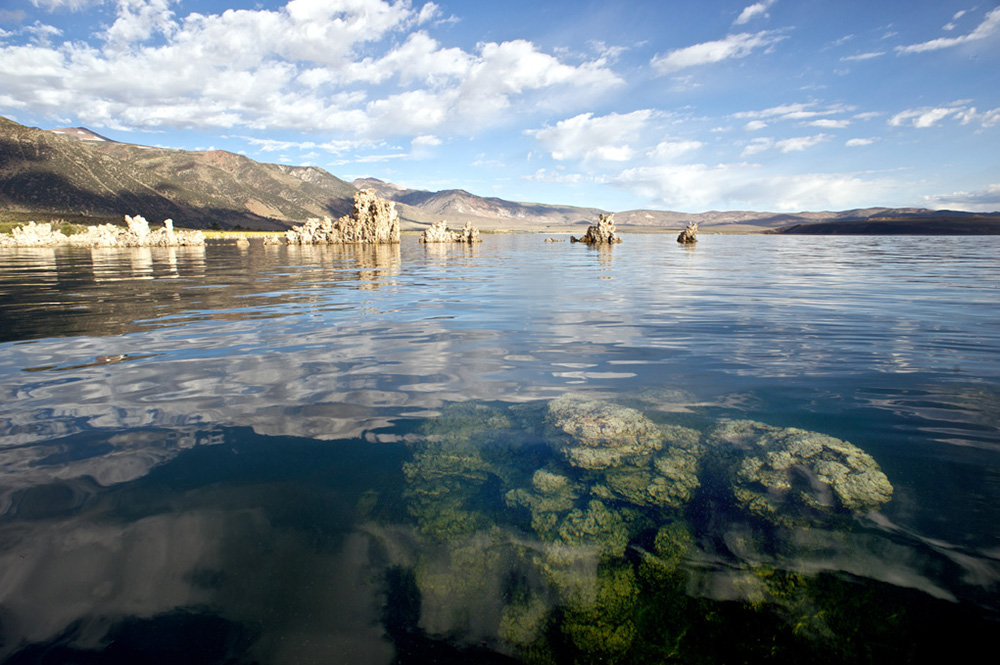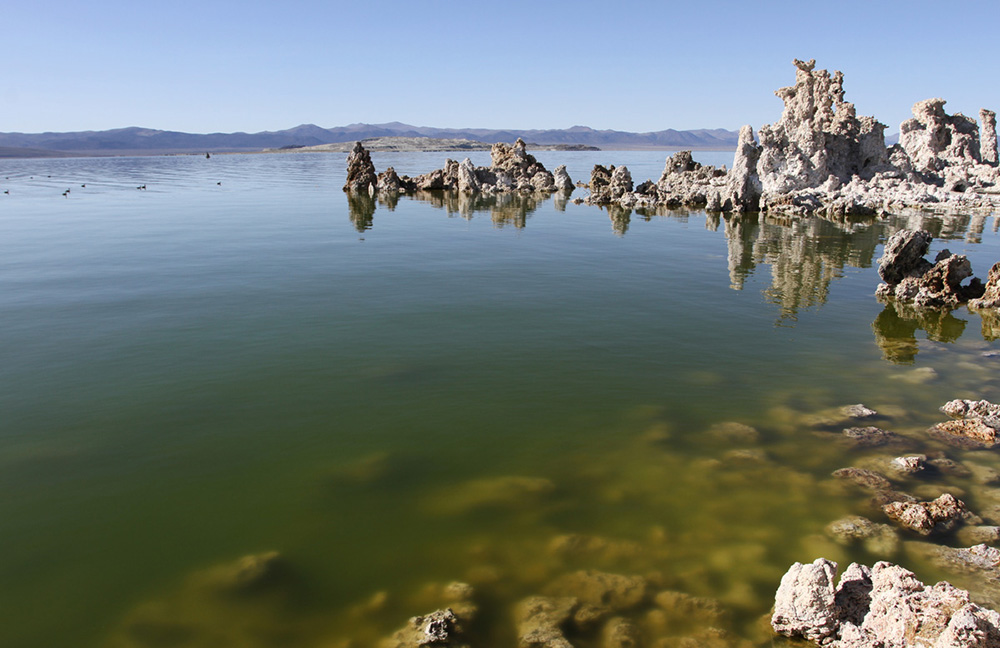
Each summer, Mono Lake undergoes a transformation. Brine shrimp flourish, alkali flies assemble, birds multiply, and the lake slowly transitions from green to tropical blue. Trillions of the endemic brine shrimp, Artemia monica, graze on algae in the upper water column, efficiently converting algal biomass into Artemia biomass. By early summer, following a peak in Artemia population, the upper waters shift from looking murky green to transparent blue. The process is so dramatic that the difference can be seen from space.

During the summer of 2014, for the first time that we know of, the lake did not turn blue. Like previous years, Artemia hatched in the late winter, slowly developed through the spring, and grew to seemingly robust numbers in May and June. Unlike previous years, the lake retained its greenish cast through July. Artemia persisted, but spotting them was difficult in the algae-rich lake. By August their numbers seemed to thin considerably and the lake became a further opaque green—locals and frequent Mono Lake visitors noticed. Looking at satellite images of Mono Lake in 2014 and comparing them to earlier years confirmed earth-bound observations.
The natural response is, “What’s up with Mono Lake?” The answer, like the lake, is unclear. The chemical and biological systems within the lake and their relationships are surprisingly complex for such a simple ecosystem. The total and peak productivity of Artemia, for example, depends on a wide range of variables including salinity, freshwater input, past and present stratification of the lake, and weather.

Thanks to more than 30 years of limnological monitoring we have a lot of data to give us a sense of what might be happening. One interesting trend is that Artemia population growth and peak has been trending more rapidly and earlier over the last decade. Why this is happening is complicated, and there may be several variables responsible. One suspected variable is increasing average spring temperatures. 2014’s limnological monitoring results will be particularly interesting given the fact that Artemia did not appear to fully graze the algae from Mono Lake’s upper water column.
Between 1–1.5 million Eared Grebes annually depend on Mono Lake during their fall migration. Artemia are their principal food source before departing for the Salton Sea and Gulf of California in November and December. In 2014 total Eared Grebe numbers were down, and the peak migratory population plummeted by mid-October to roughly one-third of their previous year’s abundance. An early decline in Artemia may have been the reason. Staff and visitors reported an unusual number of dead Eared Grebes at the shoreline, with 85 tallied by Mono Lake Committee staff one day along a stretch of South Tufa in October.
The Committee is, of course, concerned, but further monitoring and study is needed before we can piece together a clear picture of why the ecosystem behaved differently in 2014 than in past years. We eagerly await the results of the 2014 limnological monitoring while we pay careful attention to how the lake behaves in 2015.
This post was also published as an article in the Winter & Spring 2015 Mono Lake Newsletter.
